Diving into the world of coffee can become an expensive hobby. Throwing away coffee grounds after merely 30 seconds of extraction might feel like throwing away money. So you wonder, can you reuse coffee grounds, and is it safe at all? Let’s find out below.
Who knew that wanting to stay awake or try all the different beans can ramp up such a hefty bill each month. I don’t blame you for wanting to extract extra more value from your coffee grounds at all!
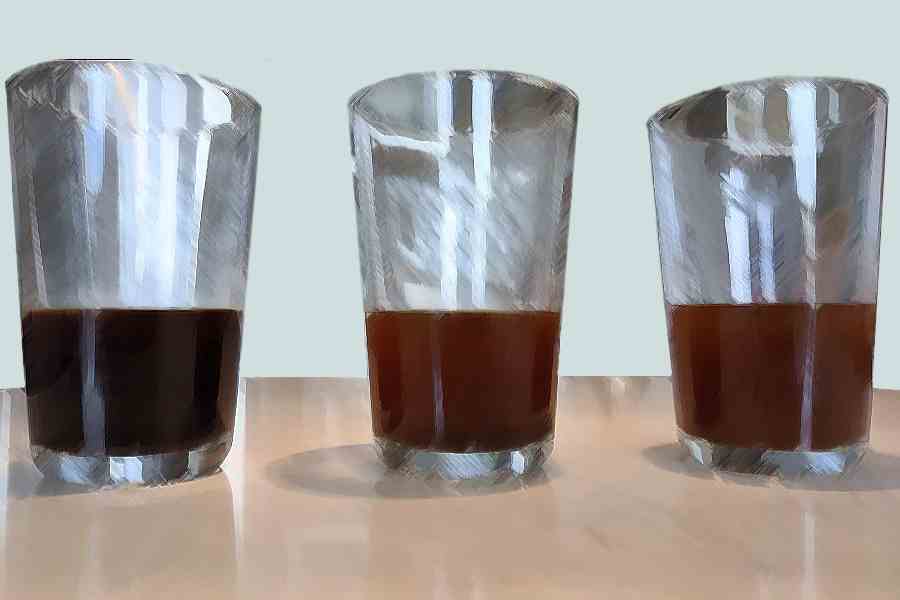
Topics Explored
- Ways to Use of Old Coffee Grounds
- Can You Brew a Second Cup of Coffee?
- Caffeine Content of Used Coffee Grounds
- Reusing Grounds for Cold Brew?
- How Many Times Can You Reuse Spent Grounds?
- Better Ways To Use It
First Up, How Are You Planning to Use It?

The common reason why people reuse coffee grounds is to brew a second coffee cup or make a second batch of cold brew. But you don’t have to brew them again to reuse them. There are other options, too, like making a body scrub or fertilizers for your garden.
Can You Reuse Coffee Grounds
Brewing a second cup of coffee is not as uncommon as you’d think. While the first batch has a premium taste and caffeine kick, the second one is dull and watery. It’s okay to double brew coffee grounds as long as you do it right away, the same day, and don’t expect the same taste.
Can You Reuse It To Make Another Cup?
The short answer is yes; you can reuse coffee grounds. But, the key lies in unlocking the coffee bean’s solubles.
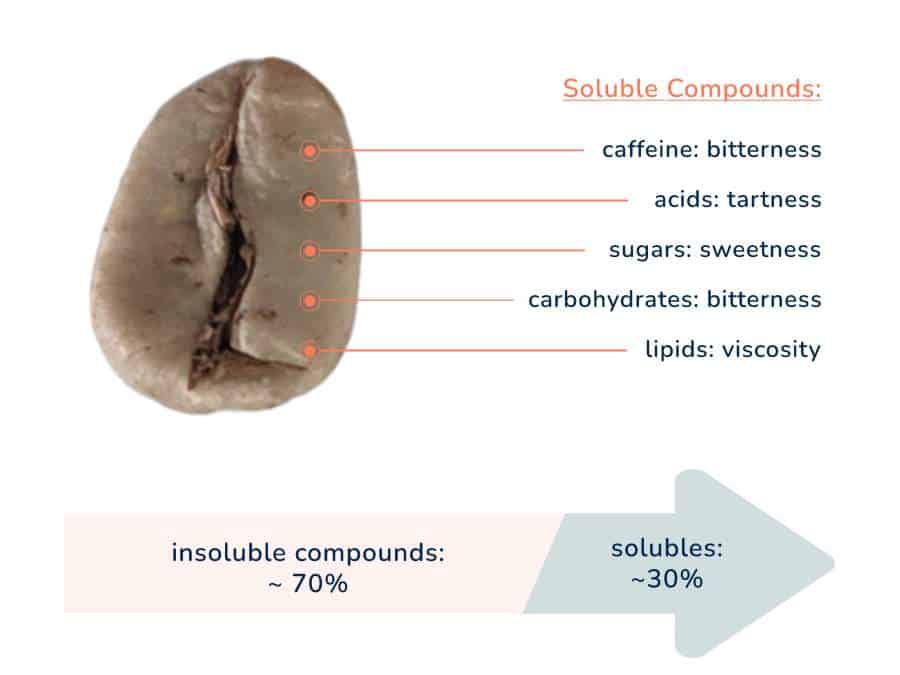
What are solubles? These are acids, fats, and sugars that give coffee that delicious flavor you long for. Only 30% of the coffee bean is water-soluble. The rest just makes the structure of the bean.
During the first brew, the majority of the solubles get extracted. That’s why the first cup is aromatic, tasty, and potent. Unfortunately, the second one containing just a small portion of the solubles naturally lacks taste.
The Optimal Coffee Extraction Yield is 18% to 22%
According to the Specialty Coffee Association of America (SCAA), a good cup of coffee should have at least 18% to 22% of its solubles dissolved during the brewing process.
Remember, solubles = flavor.
So, What Would the Second Cup Taste Like?
The flavor of the second cup won’t come close to the first cup since the first extraction removes a large portion of the coffee’s solubles. So you can expect watered-down coffee.
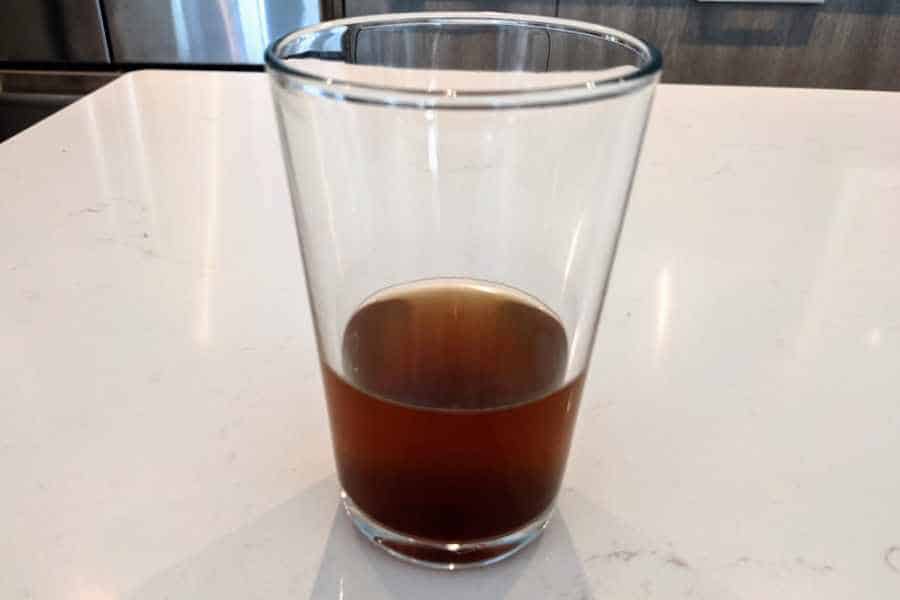
However, if you think of brewing the second cup longer to reach the remaining solubles, be careful. It can unlock undesirable flavors like bitterness.
To get a decent-tasting second cup, brew it with less water and with a finer grind size so the remaining solubles would be more concentrated.
What About the Used Grounds’ Caffeine Content?
Caffeine is one of the solubles we mentioned before. Since most of them get released in the first brew, you’d expect most caffeine to get discharged too. But, this study(1) explains that used coffee grounds can still retain up to 50% of their caffeine content.
This doesn’t mean you can extract all the remaining caffeine in the second brew. The law of diminishing returns applies here; you’d get progressively smaller increases in output. So, you can expect less and less caffeine in each subsequent brew. If you’re relying on the second brew for that instant caffeine jolt, skip this altogether.
Reusing Coffee Grounds for Cold Brew
Cold brew is probably the best method for second brewing your coffee grounds. The first brew will have a more pronounced flavor and aroma, but the second will also be decent tasting. Just be careful not to use very old coffee grounds or you’ll risk catching a food-borne illness.

Cold Brew and Coffee Grounds
The most common way to make cold brew at home is the immersion method. With this method, you soak the coffee grounds in water for an extended time, usually overnight, to create smooth cold coffee. During this time, the coffee solubles get extracted into the water.
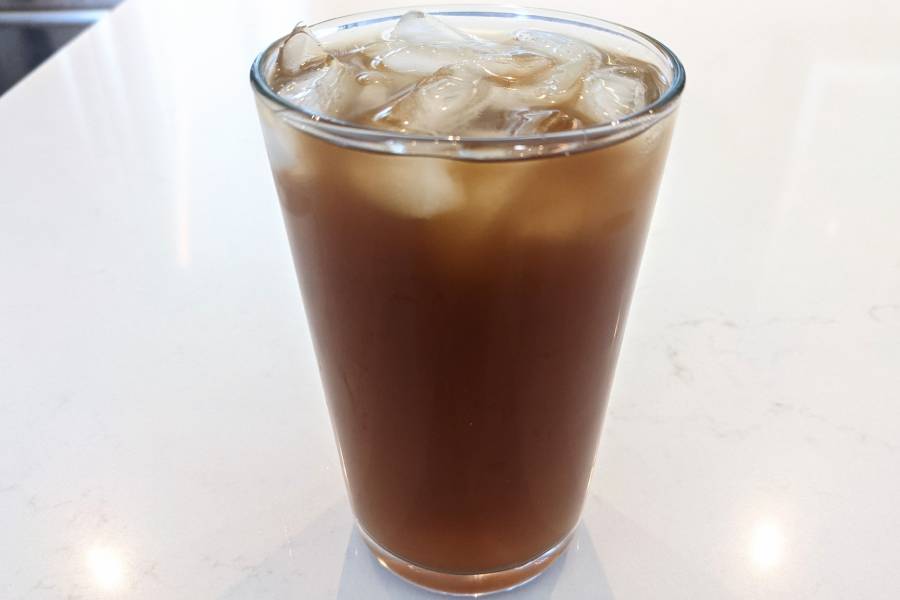
Generally, the longer the soaking period is, the more solubles will be released. That’s why the brewing time of cold brew is so long. The good news – the temperature and grind size needed for cold brew play a significant role in extracting coffee’s solubles.
Temperature and Grind Size Saves the Day
The volatile and soluble compounds of coffee dissolve best at 200°F or just about boiling temp. However, since cold brew uses cold water, the solubles release more gradually. That’s the reason behind the extended brew time, even up to 24 hours.
Cold brew also requires a larger grind size compared to espresso or pour-overs. The larger grind size means less surface area that comes into contact with water. As a result, water will take longer to dissolve the deeper contents of each grind. You also need to use more coffee grounds per batch, which you can’t do with many brew methods.
Can I Reuse Coffee Grounds from Cold Brew?
The temperature, grind size, and volume of ground coffee used in cold brew and the immersion method makes reusing more forgivable and doable. Because of the larger grind size, you can still unlock leftover solubles with the second extraction.
To increase the chances of a good-tasting second brew, you can shorten the brewing time for the first batch, so there will be more soluble to dissolve in the second batch.
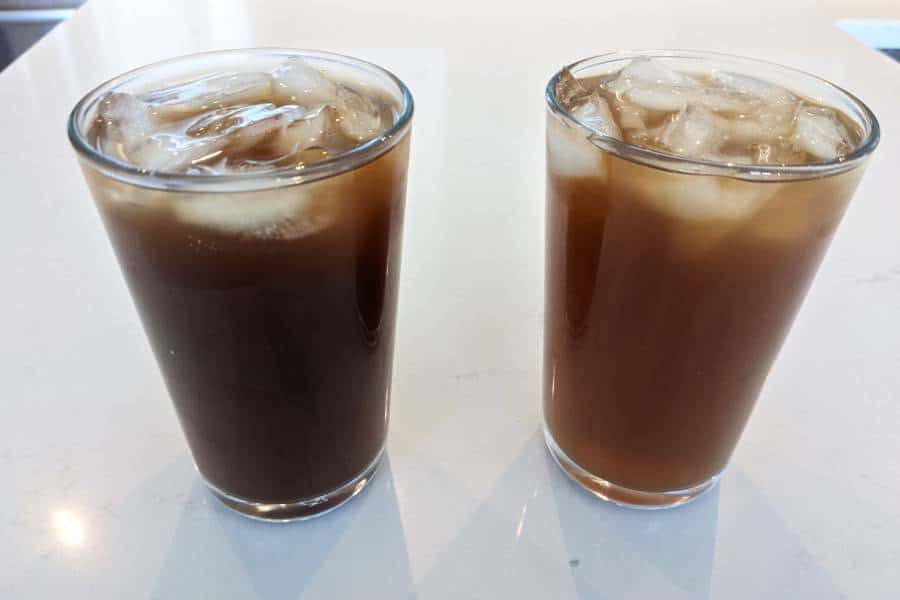
However, the flavor still wouldn’t be on par with the first batch. So the real dilemma is would you compromise the taste of the first batch so that you could reuse the grounds? This is the reason why most coffee experts frown upon and discard reusing coffee grounds.
How Many Times Can You Reuse It?
If you’re looking into reusing coffee grounds, beware that twice is the limit. Any next brew will lack caffeine and overall flavor. There will be fewer dissolvable solids, and you risk unlocking undesirable compounds.
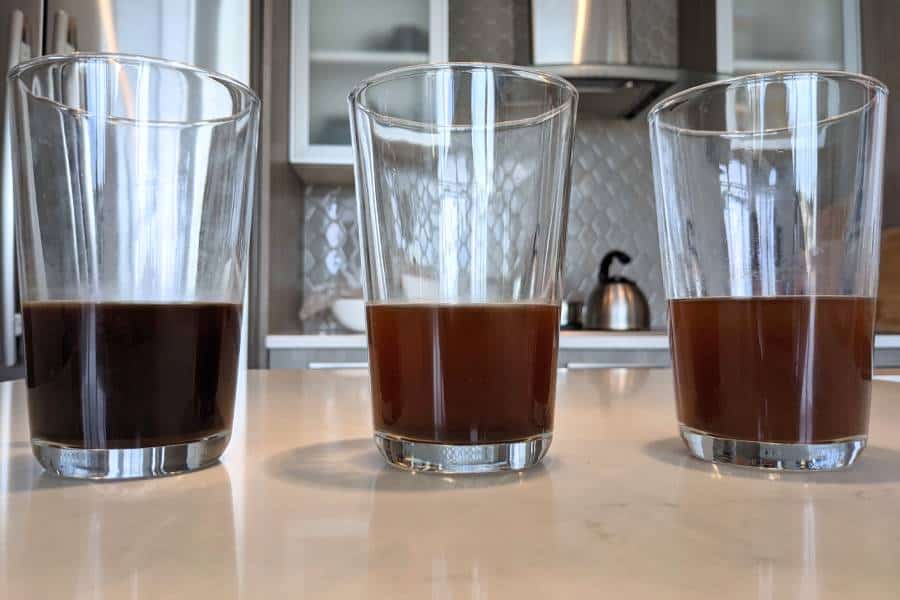
Don’t store used coffee grounds for too long. They’re the perfect environment for breeding bacteria and mold, especially the grounds from cold brew.
Better Uses of Old Grounds
You don’t have to brew a second batch of coffee to reuse the coffee grounds. Other ways are still environmentally friendly and helpful. For example, coffee absorbs smell, so you can use it as a deodorizer, the smooth grinds make for excellent body scrub, or you can just compost it.
Compost It
The acid in coffee beans is water-soluble, so it mostly remains in the coffee, making coffee grounds pH neutral. In addition, they have about 2% of nitrogen(2) which makes them an excellent nitrogen source for your compost.
There’s also anecdotal evidence that brewed coffee grounds placed near your plants will repel slugs and snails from destroying them.
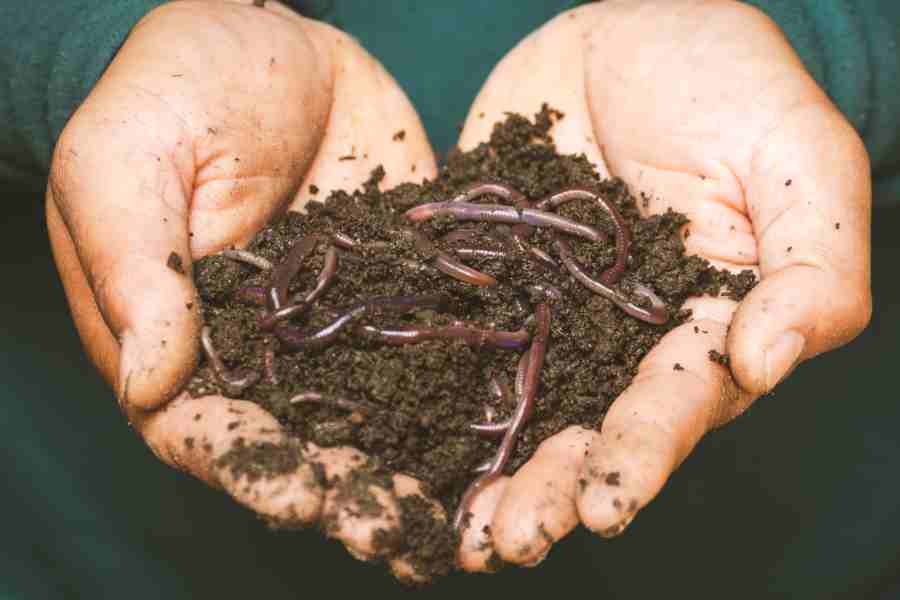
Use It As A Deodorizer
Coffee is fast at absorbing smell which is why we keep it in airtight containers. But when it comes to reusing coffee grounds, they work as the perfect deodorizer.
Nitrogen in coffee is great at absorbing sulfur and other toxic gasses. Simply put them in your fridge, bathroom, kitchen counter, or in your car!
Parting Thoughts
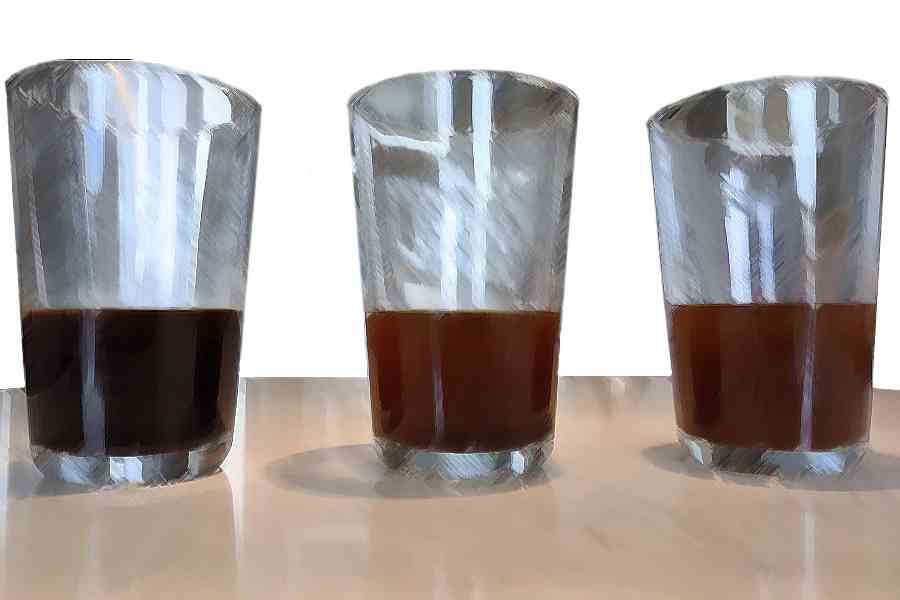
So, can you reuse coffee grounds? The short answer is yes. You can brew a second cup or second batch of cold brew if you’re not very particular about the taste or use additives as milk, cream, and sweetener.
Personally, we wouldn’t recommend it, as any alterations made to the initial brew will reduce the enjoyment of the first cup. Instead, you can reuse the coffee grounds around the house or as compost.
FAQs
Can you reuse day-old coffee grounds?
You can reuse day-old coffee grounds, but there will be significant flavor deterioration. Since day-old grounds get exposed to air longer, they more oxidate faster than same-day grounds, resulting in more bitterness and loss of flavor. In addition, day-old grounds run the risk of going stale or becoming a breeding ground for bacteria.
Can you dry out coffee grounds and use them again?
It depends on what you would be using the dried coffee grounds for. Dried grounds are acceptable for arts and crafts like dyes. You can also bake them in the oven at low heat to remove any residual water. But you shouldn’t dry and consume already used coffee grounds. There’s no guarantee that water is completely removed; mold and bacteria can be growing on them, making you sick.
Wondering where your info comes from? We totally understand. Hey Joe only obtains our information from reputable sources. Contents from this article are sourced from the following publications:
- American Chemical Society: https://pubs.acs.org/doi/abs/10.1021/jf3040594
- Oregon State University: https://extension.oregonstate.edu/gardening/soil-compost/coffee-grounds-composting

